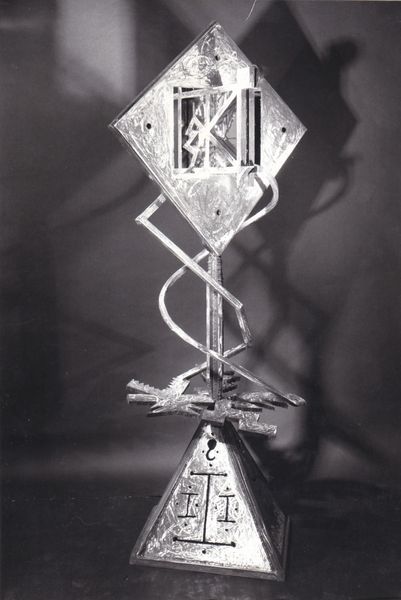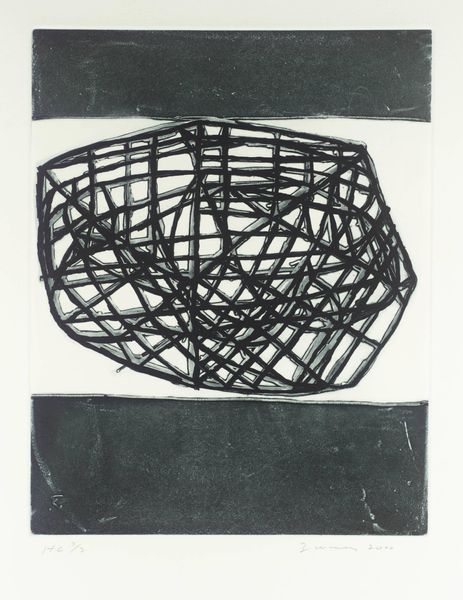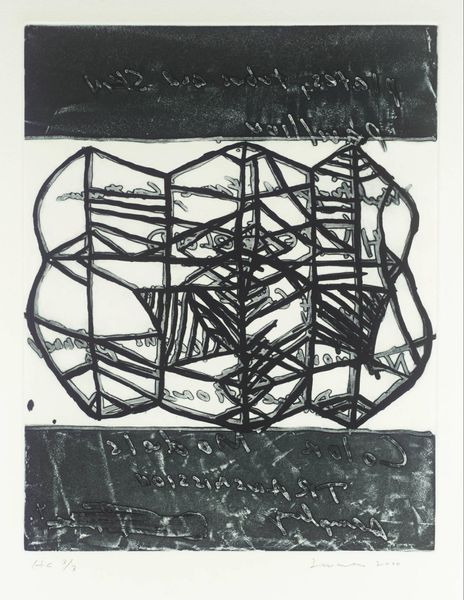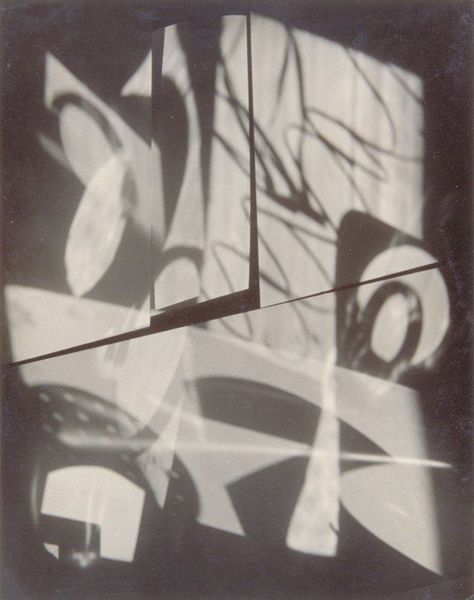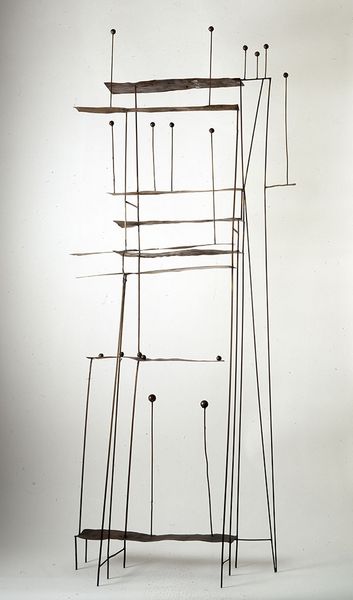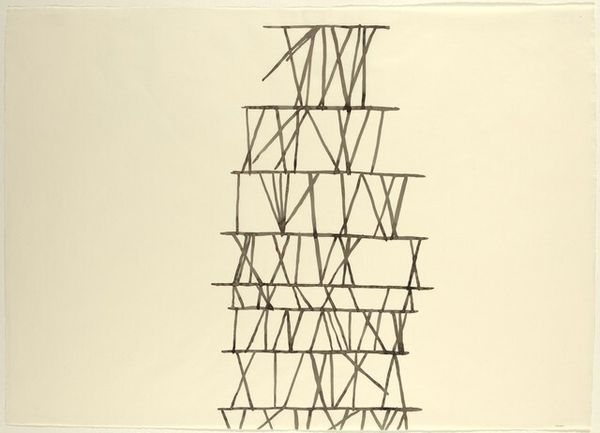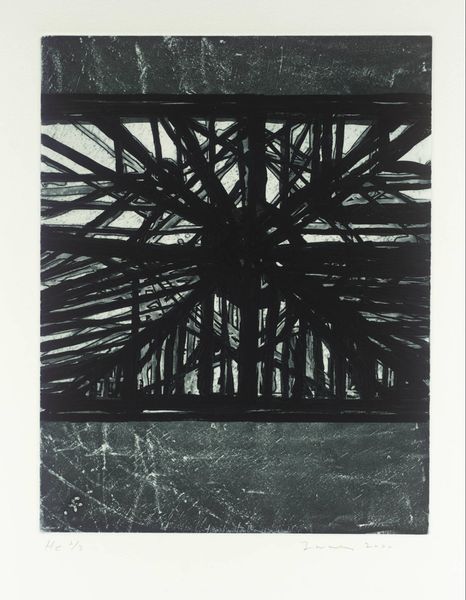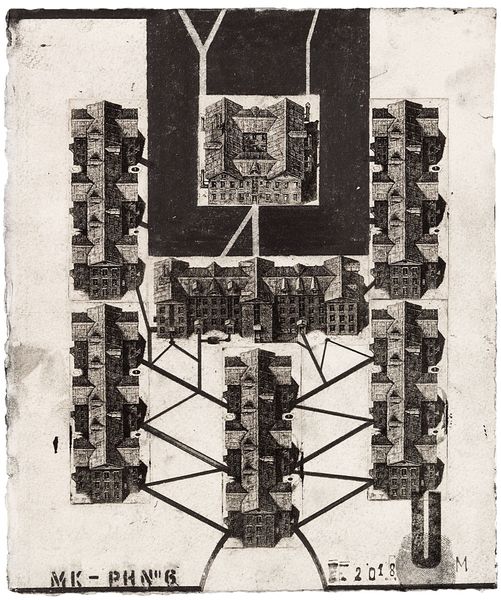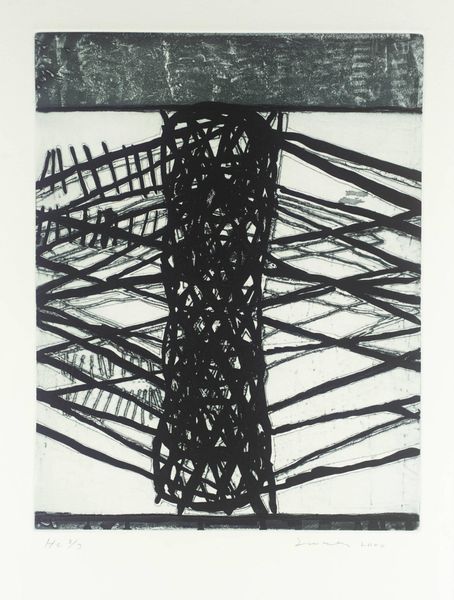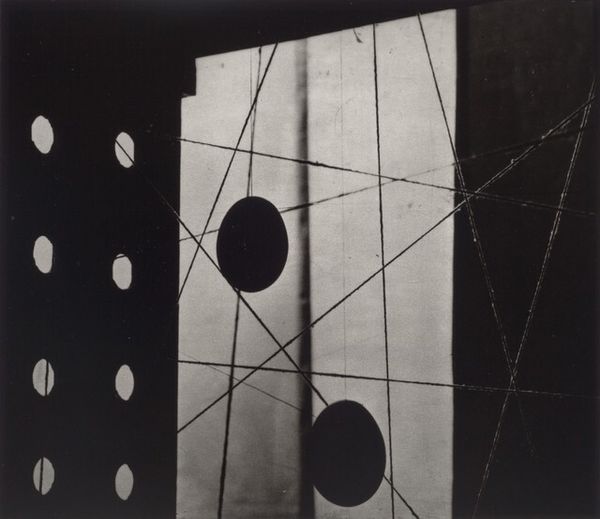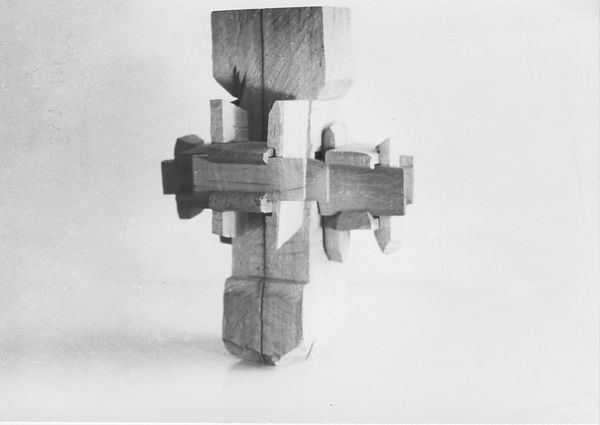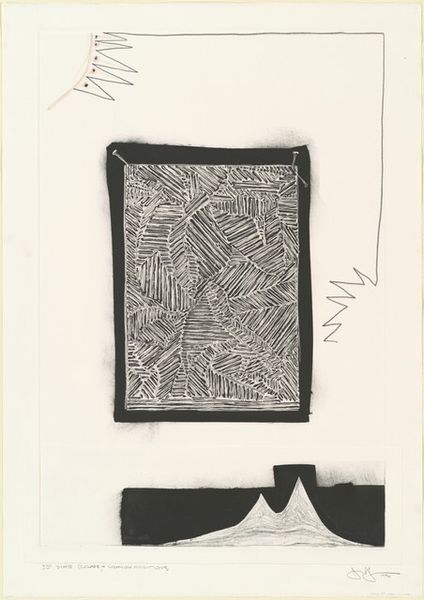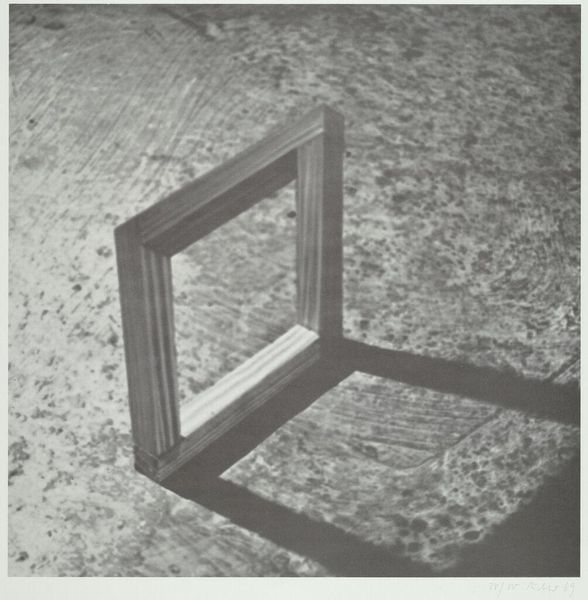
metal, sculpture
#
non-objective-art
#
metal
#
monochrome colours
#
form
#
carved into stone
#
geometric
#
sculpture
#
spiraling
#
carved
#
abstraction
#
line
#
monochrome
Dimensions: 190.5 x 96.52 cm
Copyright: Douglas Abdell,Fair Use
Curator: Douglas Abdell created "Octave of Edevolution" in 1989. The medium is metal, assembled into an intriguing sculpture. Editor: The metal construction gives it a cool, industrial feel. I’m struck by its organized chaos—the geometry fights against the swirling, almost desperate, energy. Curator: Absolutely. Knowing Abdell, that tension is intentional. His work frequently tackles the intersection of history, identity, and power. "Octave of Edevolution" presents an opportunity to think about societal structures—those geometric shapes—and how they are constantly being challenged, or "de-evolved" and reshaped by more fluid forces, maybe those looping curves you noticed. Editor: That makes me consider the semiotic properties of metal as a construction material. Metal implies durability and rigidity, doesn’t it? It’s meant to stand the test of time. Abdell subverts this quality by arranging the metal elements to appear fragile. What is lasting here, or worth preserving? Curator: It’s not only subversion but commentary. Look at the pyramid base – a traditional symbol of power, knowledge, of the ruling class – and the swirling forms that dominate it, practically obscuring that very foundation. I can’t help but interpret the entire sculpture as an overt deconstruction of systemic authority. His intersectional stance always makes you consider the unseen subjects of such forms. Editor: But aren’t those just more imposed, external meanings? From a formal viewpoint, the pyramid also functions as an anchor. Without it, the entire piece might lose its visual grounding, dissolve into total abstraction and become weightless. The monochrome presentation heightens the object quality and focuses the gaze on the geometric tensions that arise between shapes. Curator: The sculpture also uses lines, many sharp angles—it reflects the chaotic realities of our world. The artist might have been referencing a period in which different views were rapidly colliding. Editor: Perhaps. From my point of view, what stands out in Abdell’s creation is its masterful study of contrast. Regardless of potential meanings, “Octave of Edevolution” engages the observer through its contrasting forms. Curator: And to go full circle, it offers a way of viewing reality and deconstructing history by analyzing different cultures.
Comments
No comments
Be the first to comment and join the conversation on the ultimate creative platform.
